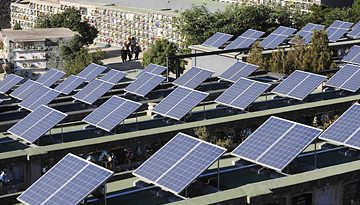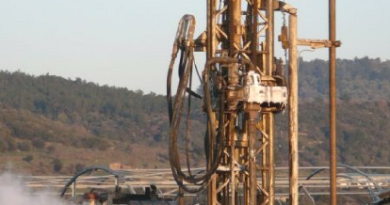ARE WE ENTERING THE GOLDEN AGE OF GEOTHERMAL ?

At some 6,000 degrees Celsius (11,000 degrees Fahrenheit), Earth’s core is about as hot as the sun. Though not comparable, even at 2,000 to 5,000 meters (6,500 to 16,000 feet) beneath the surface of the planet, it can be a scorching 60 to 200 C. In volcanic regions, even surface temperatures can reach 400 degrees. That makes for a lot of potential heat-based energy. Our ancestors were no strangers to the power of geothermal energy. In the first century AD, Romans living in the western German cities now known as Aachen and Wiesbaden heated their houses and thermal baths with hot spring water. In New Zealand, the Maori people cooked their food using the Earth’s heat, and in 1904, geothermal energy was used to generate electricity in Larderello, an area in central Italy. These days, some 400 power plants in 30 countries generate electricity using steam generated beneath Earth’s surface, producing a total capacity of 16 gigawatts (GW). This method of generating electricity is particularly important in volcanic regions along the Pacific Ring of Fire, including the United States, Mexico, El Salvador, Iceland, Turkey, Kenya, Indonesia, the Philippines and New Zealand. But on a global level, geothermal energy only accounts for 0.5% of electricity generation. Across the world, geothermal energy is mainly used for heating swimming pools, buildings, greenhouses and for urban heating systems. Water up to 200 degrees C is pumped from boreholes up to 5,000 meters deep. The heat is then extracted and the cooled water is pumped back in through a second bore. This method of heat capture is feasible worldwide, inexpensive and increasingly popular in countries that lack volcanic activity. According to assessments by the Renewables Global Status Report, the installed capacity of geothermal heat plants is around 38 gigawatts worldwide — more than double the capacity of geothermal power plants that generate electricity. To date, China (14 GW), Turkey (3 GW), Iceland (2 GW) and Japan (2 GW) are the leaders in developing deep geothermal energy, heating more and more city districts and greenhouses. In Germany, the city of Munich enjoys inexpensive geothermal heating and has set its sight on using the technology to make the sector climate neutral by 2035. The German government is also looking at further developing deep geothermal energy to create a nationwide climate-neutral heat supply by 2045. According to studies, deep geothermal energy could generate around 300 terawatt hours of heat annually from an installed capacity of 70 GW — more than half the future heat demand of all buildings. Increasingly, however, geothermal energy is also being harnessed from sources close to the earth’s surface using heat pumps. In boreholes just 50 to 400 meters deep, a closed pipe system carries water from the surface to underground and then back, heating it 10 to 20 degrees C. A heat pump then uses this energy to output water at 30 to 70 degrees C, which is then used to heat buildings.



